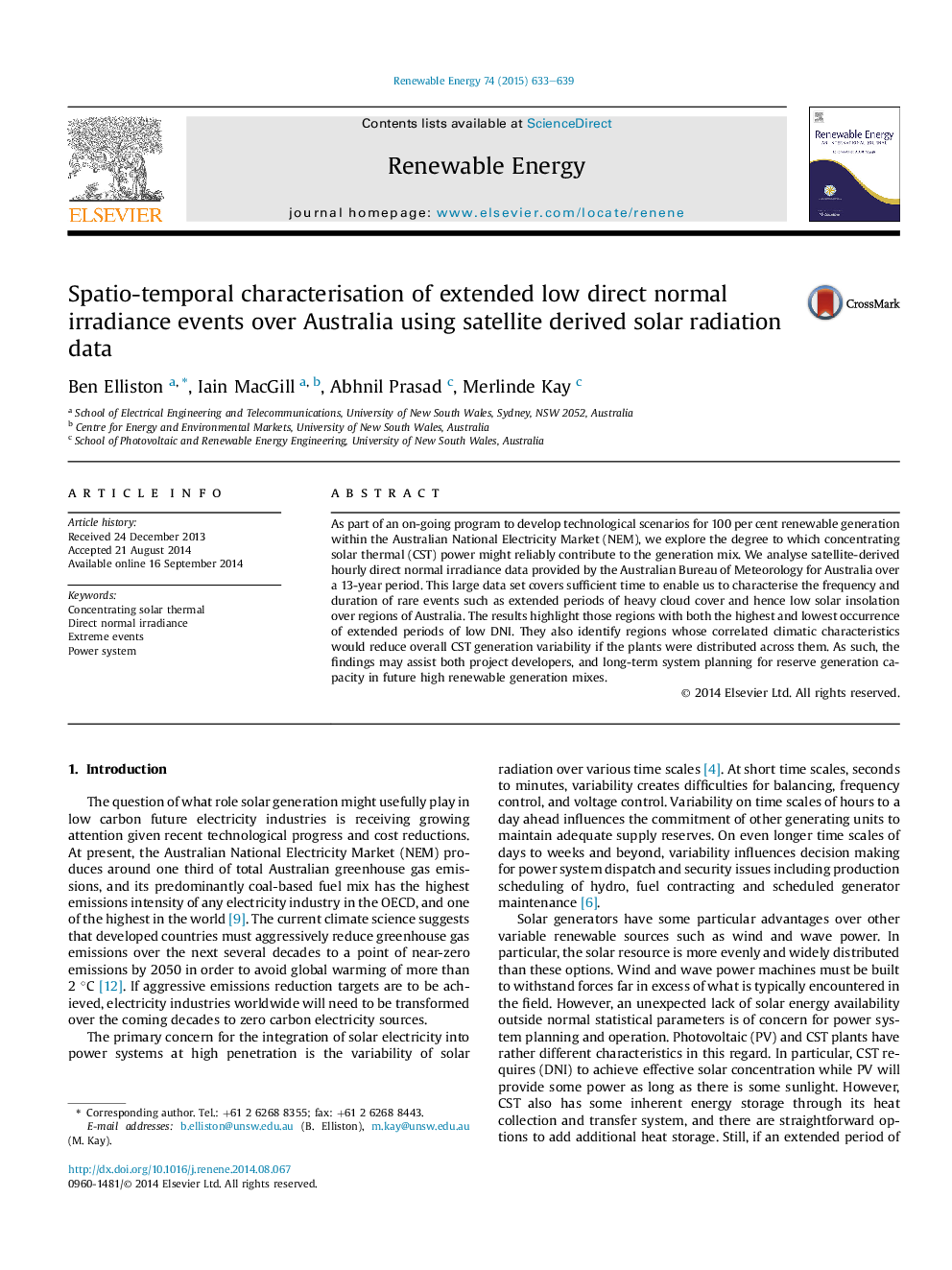| Article ID | Journal | Published Year | Pages | File Type |
|---|---|---|---|---|
| 300016 | Renewable Energy | 2015 | 7 Pages |
•We investigate how CST can contribute to the energy mix in Australia.•We characterise the frequency and duration of rare low solar insolation events.•Results highlight regions of the highest and lowest occurrence of extended low DNI.•Regions are identified and correlated to reduce overall CST generation variability.
As part of an on-going program to develop technological scenarios for 100 per cent renewable generation within the Australian National Electricity Market (NEM), we explore the degree to which concentrating solar thermal (CST) power might reliably contribute to the generation mix. We analyse satellite-derived hourly direct normal irradiance data provided by the Australian Bureau of Meteorology for Australia over a 13-year period. This large data set covers sufficient time to enable us to characterise the frequency and duration of rare events such as extended periods of heavy cloud cover and hence low solar insolation over regions of Australia. The results highlight those regions with both the highest and lowest occurrence of extended periods of low DNI. They also identify regions whose correlated climatic characteristics would reduce overall CST generation variability if the plants were distributed across them. As such, the findings may assist both project developers, and long-term system planning for reserve generation capacity in future high renewable generation mixes.
